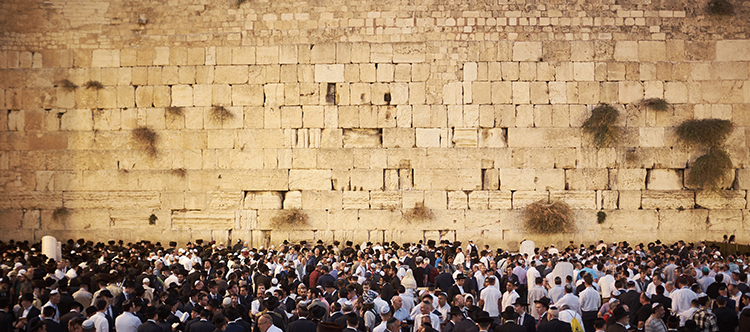June 10, 2025|י"ד סיון ה' אלפים תשפ"ה Behar-Bechukosai 5785 - Impractical Dreamers
Print ArticleParshas Behar begins as SO MANY parshios in the Torah do, except that it’s NOT EXACTLY the same. The introduction to so many halachos in the Torah begins: Vayidaber Hashem El Moshe Leimor. Hashem spoke to Moshe as follows.
And yet, the introduction here to the laws of Shemitta is:
(א) וַיְדַבֵּר יְקֹוָק אֶל מֹשֶׁה בְּהַר סִינַי לֵאמֹר:
And Hashem spoke to Moshe, AT MT SINAI, as follows
And this change, of course, causes quite an uproar in Chazal, who respond, as quoted by Rashi:
מה ענין שמיטה אצל הר סיני, והלא כל המצות נאמרו מסיני
Why does the Torah decide to tell me that the laws of Shemitta were taught at Sinai! I thought ALL the mitzvos were taught at Sinai! What makes the mitzvah of Shemita so special that it is THE mitzvah about which the Torah says “it was taught at HAR SINAI”!
Rashi quotes an answer to this question from the Toras Kohanim:
אלא מה שמיטה נאמרו כללותיה ופרטותיה ודקדוקיה מסיני, אף כולן נאמרו כללותיהן ודקדוקיהן מסיני,
The laws of Shemita were taught in their ENTIRETY at Sinai, EVERY DETAIL. And so, too, says Rashi, in the same way that every detail of Shemita as taught at Sinai, every single mitzvah in the Torah had ALL of it’s details taught to Moshe at Sinai.
And, of course, this answer just leads to the NEXT QUESTION: But WHY WAS SHEMITA CHOSEN as the SYMBOL, THE MITZVAH that would be an example for all other mitzvos!?
I would like to share with you the very beautiful approach of Rabbi Dr. Norman Lamm zt”l. In 1972, when Rabbi Lamm addressed this question, he noted a trend which was true in his day, but I would argue is probably as true – or even more true – today. One of the concerns many people have about Judaism in 2025, and it is a real and appropriate concern, one which I share, is how we can show our children and ourselves that Judaism is relevant and PRACTICAL. A theoretical Judaism. A Judaism that is only about ideas, rituals, and theology is too dry and too archaic to be passed down to the next generation, or even to be grabbed onto by THIS generation.
And because of this trend, many teachers of Torah, myself included, try very hard to make the teaching of Torah feel PRACTICAL, feel RELEVANT to our daily lives. We give shiurim on topics which people can take home and USE right away, and we try not to get too bogged down on that which is theoretical. That being said, argues Rabbi Lamm, that when we become TOO focused ONLY on the elements of Judaism that are PRACTICAL, we will end up missing out.
And, therefore, when Hashem chose a law that would be EMBLEMATIC of Torah, that would REPRESENT ALL mitzvos that were taught at Sinai, He chose a mitzvah that for the majority of our peoplehood would remain abstract and theoretical.
Shemita, of course, is one of the mitzvos hateluyos ba’aretz, a mitzvah that is dependent on being present in the Land of Israel. When it was given to Am Yisrael, they were a people living in a barren desert who had never owned their own property and certainly had never been farmers. And after a little more than a thousand years of living in Israel, we would then spend the next almost 2,000 years once again where Shemita would remain a totally IMPRACTICAL halacha, until only recently, the past 100 or so years, where the halachos of have been revived once again.
And what is true about Shemita, is true of all kinds of mitzvos at different times in our history. And so, if one will ask the question: Ma inyan Shemita eitzel Har Sinai? Why CHOOSE Shemita as the symbol of all mitzvos that were taught at Sinai, Rabbi Lamm argues it is to remind us that Torah & Mitzvos do not only have value when they are relevant and PRACTICAL. They have inherent value, no matter the place, no matter the time.
And I would like to share three reasons why focusing on the IMPRACTICAL at times can have extraordinary value:
First, when I decide what is practical or relevant, I am determining on my own, based on my intellect, which mitzvos have more value than others, when ultimately it’s important to find a sense of humility when engaging with the Divine. Yes, certain mitzvos may seem more important, seem to have more of an impact on society, etc. Maintaining a connection and commitment to ALL mitzvos, no matter their perceived relevance, humbles us.
It is often noted that there are two mitzvos about which the Torah itself tells us one is blessed with arichus yamim, long life: shiluach hakein, sending away the mother bird, which is super easy, and kibud av v'eim, honoring one’s parents, which might be the most difficult mitzvah in the torah. Why? So that we recognize that we actually have NO IDEA which mitzvos Hashem thinks are of "higher quality". Remaining open to all facets of Torah allows us to remain committed to ALL OF TORAH simply because it is commanded by Hashem, a value in an of itself.
Second, often times we may think we know how meaningful or practical a certain mitzvah is, - let’s assume we think it’s NOT so relevant or exciting - only to find that when we really engage in it, it is so much more meaningful than we ever could have imagined. Ask the average teenager how meaningful Shabbos is. Some may love it even at their age, while many find it frustrating, with all of its restrictions. Yet, as we grow older and more sophisticated, many of us learn to appreciate the way Shabbos pauses the outside world and allows us the space to reflect on what really matters in life. In short, staying connected to that which may feel IMPRACTICAL, may allow us to find out later just how meaningful and VERY RELEVANT it can be.
Third, remaining connected to ALL of Torah, even to those elements that seem irrelevant today, allows us to continue to remain future-oriented. It allows us to DREAM.
Chazal tell us:
דברי תורה עניים במקום אחד ועשירים במקום אחר
“Words of Torah can sometimes be poor in one place and wealthy in another.”
What Chazal mean when they say this is sometimes a pasuk can seem relatively empty of meaning in one place, but when it is compared to a different text, in another context, its meaning becomes incredibly rich.
Rabbi Lamm liked to paraphrase this idea by saying the following:
דברי תורה עניים בזמן אחד ועשירים בזמן אחר
“Words of Torah can sometimes be poor in one time and wealthy in another.”
There are ideas in Torah which at certain times of history seem archaic and insignificant, at other times can be revealed as possessing unimaginable depth and richness.Think, for example, about a Jew living in the middle ages, considering how much of our text and ritual surrounds hoping for a return to Yerushalayim.
He goes to a wedding and sees the chosson break the glass under the chuppah. Every time he benches he thanks Hashem for the bread he gave him, and for the land He promised our people. He davens three times a day, facing Yerushalayim and spends no fewer than 20% of the brachos in Shmone Esrei yearning for a return to our land and to our ancient city. And he spends one ENTIRE DAY each year fasting and praying for a return to that land. All of this at a time when any reasonably thoughtful person would say that the idea of the Jewish people ever returning to establish a Jewish state with its capital in Yerushalayim is the thing of impractical idealists, living in a dream world.
If we have the privilege to celebrate Yom Yerushalyim this Sunday Night and Monday, it is because of generations of Jews who cast aside the concern for what is practical and relevant and chose instead to dream and sing L’Shana HaBaa B’Yerushalayim, no matter how silly and unsophisticated it may have seemed at the time.
As we face another unspeakable tragedy this week, the brutal murder of Yaron Lischinsky and Sarah Lynn Milgrim HY”D, killed for the crime of being Jewish, we once again find ourselves searching for answers. And while we never have the answer for any particular tragedy, our response must continue to be found in our willingness to dream, to invest in a future that to others may seem impossible. And we have the ability to do so because we have a mesorah of generations of Jews who REFUSED to give in to the reality in front of their eyes and instead continued to dream.
In the Shir HaMaalos we say every Shabbos and Yom Tov we say: B’Shuv Hashem Es Shiviseinu Hayinu K’Cholmim, that when we will return to a fully rebuilt Yerushalayim it will be like we are dreaming.
Why is that the language? K’cholmim? Like Dreamers? The answer is that it is only BECAUSE OF THE DREAMS, of the willingness to stand strong in belief of something that to others may seem irrelevant or illogical, that we will eventually arrive at our destination. And then, when we finally do arrive, we will KNOW THE SCENE! It won’t be strange. It will be JUST LIKE THE DREAMS WE HAVE ALL DREAMT TOGETHER FOR MILLENIA! Real life will be K’CHOLMIM, LIKE the Dreams we have been dreaming all along.
This is the power of Yom Yerushalayim. A day that is a tribute to this special ability of the Jewish People to stay committed to who we are, even when it feels a irrelevant, impractical, or even impossible. To be dreamers.
Ma Inyan Shemita Etzel Har Sinai? What is the message of the connection between the laws of Shemita to Har Sinai?
It teaches us that every mitzvah has value.
It teaches us that even mitzvos which may feel irrelevant may actually become quite meaningful if we get to know them better.
And it teaches us that a commitment to ALL of Torah, even the parts that feel irrelevant, impractical, and even impossible, is in fact the key to our ability to fulfill of our dreams.




